16 December, 2003
Sampling at Minna Bluffs and Black Island
In addition to determining the role that yeast play in
Antarctic soils, our team is also exploring the
genetic diversity and distribution of the yeast. The
purpose of sampling at Minna Bluffs and Black Island
was to collect “grab samples”, which will support the
latter of these two goals.
In Taylor Valley we are looking at population
dynamics. The team will continue to collect samples
from their chosen sites at three different times in
the season. This will let them know not only the
distribution of the species in the Valley, but more
importantly how they change. If yeast are active in
the ecosystem, the team expects to see changes in
their numbers and populations as the summer season
progresses.
To determine diversity in relation to distribution,
multiple sampling throughout the season is not
required. The team merely collects samples from a
variety of locations. Last season the team collected
soil samples at Cape Royds, New Harbor, around other
lakes and glaciers in Taylor Valley, and around
McMurdo. This year they are surveying Minna Bluffs,
Black Island, and various locations in Wright Valley;
including Don Juan Pond and the Labyrinths. Since the
purpose of sampling in the Mt. Discovery area was not
to determine population dynamics, our sampling process
on this trip was much simpler.
Review the sampling process described in my Nov 24th
journal and my live broadcasts and determine what
steps would not be necessary.
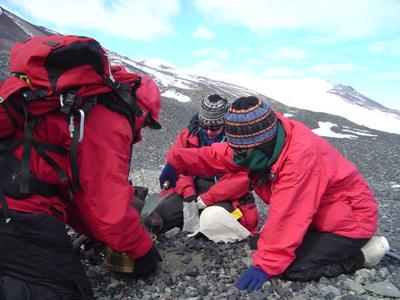
1. Barb, Regina and Laurie collecting soil samples.

2. Rusty sieving out samples. While the actual process of collecting the soil was the same, we only collected one sample from each site (instead of 3) and did not mark out a 2 meter circle with flags. Why didn’t we need use the flags and rocks? (Hint: what aren’t we going to do at these sites?)

3. No it’s not a wooly mammoth, but instead a sponge. We found specemins like this all over Minna Bluffs and Black Island.
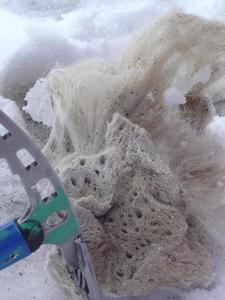
4. A close up view of the sponge.
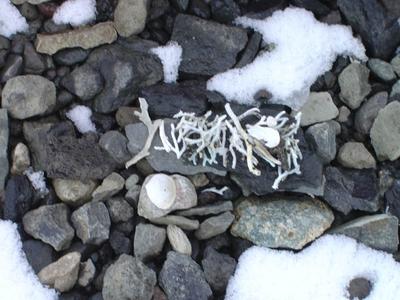
5. We also saw little bits of old coral and shells that were scattered all over the ground at an area we nicknamed “The beach”. These organisms were found on Minna Bluffs, but we also found similar samples on Black Island. How come we were able to find marine organisms on an area surrounded by fresh water glacier? Hint: it has to do with glacier dynamics.

6. Hunting for more shells. We found these marine species so interesting that it was easy to get sidetracked as to why we came here in the first place.

7. Brian and Rusty use a hurdy-gurdy to pump fuel from the barrel to the jerry can.
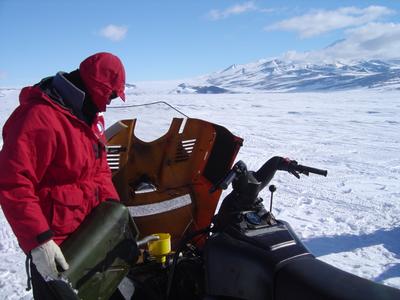
8. Scott filling one of the ski-doos.
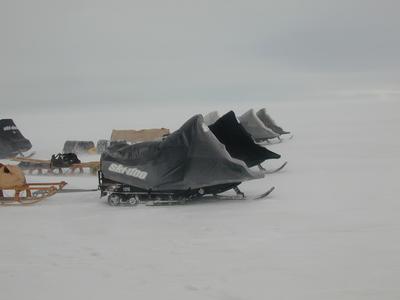
9. The ski-doos have finally been fed and put to bed.
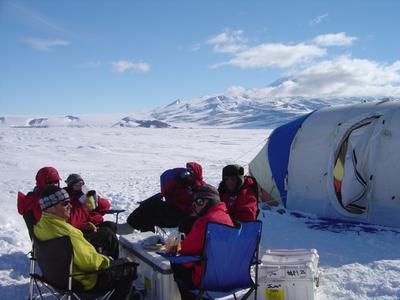
10. A summer polar picnic outside the tent.
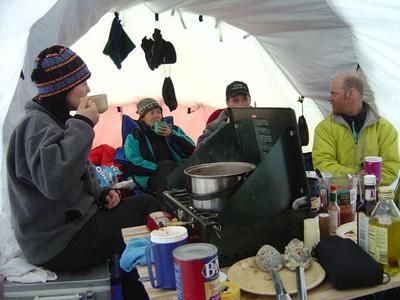
11. Regina, Laurie, Scott and Brian relaxing inside the tent over a cup of homemade hot chocolate.
Contact the TEA in the field at
.
If you cannot connect through your browser, copy the
TEA's e-mail address in the "To:" line of
your favorite e-mail package.
|
